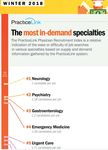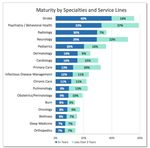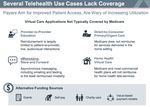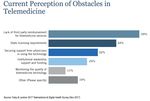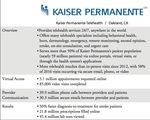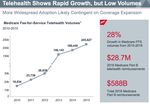Calling a Patient with Facetime: Current Trends in Telemedicine Today
←
→
Page content transcription
If your browser does not render page correctly, please read the page content below
“There is going to be a significant physician
workforce shortage under all of the likely
projections. We see that, quite frankly, only
getting worse as the population ages.”
-Janis M. Orlowski, MD
AAMC Chief Health Care Officer• 19% deficit by 2025 *Source: AAMC Complexities of Physician Supply and Demand: Projections from 2015 to 2030 • 1/3 of Physicians Retiring • 12% Population growth • Age > 65 to grow 55% • Incidence of stroke increasing • Limited number of graduates in stroke, neuro- critical care, dementia
70% of institutions note telemedicine as top or high priority
*Source: 2018 REACH Telemedicine Industry Benchmark SurveyTelestroke & Teleneurology rank as 2 of the top 4 most
mature programs around the country
*Source: 2018 REACH Telemedicine Industry Benchmark SurveyTelestroke Model
Conventionally operates via “Hub-and-Spoke” in which:
o Specialist neurologists at the “hub” (Stroke Center) communicate with “spoke-
Originating” site
o ER doctors at spoke site consult hub doctors using telemedicine equipment
o CT scans at the spoke site are shared electronically with the hub specialists
o After examining the patient and reviewing images, recommendations are
given to the ER provider to treat with tPA or recommend for embolectomy
o Protocols for hub-and-spoke must be made togetherBenefits of Telestroke
Greater access to specialists in underserved areas
Improved patient outcomes
o Increased TPA rates
o Increased endovascular procedures
o Resulting in reduced stroke mortality and long term disability
Reduced delay in care leads to earlier diagnosis & treatment
Operational Benefit
Improved patient engagement & satisfaction
Improved patient convenience
o Increased HCAHP scoresSecondary Benefits of Telestroke
Improved Image in local community
Improved employee outcomes
o Improved physician job satisfaction by providing flexibility of schedule
o Improved institutional culture by reducing physician burnout
o Improved recruitment due to telemedicine offerings
Opportunity to scale out the benefits
o Expansion into additional neurological service lines
o Move from departmental to enterprise telemedicine programs
Financial Benefit
Increased Revenue Opportunity
Cost Savings by reduced readmissions54% of organizations have cost savings of at least 11%
*Source: 2017 Foley Telemedicine & Digital Health Survey
Given the relatively recent evolution of telestroke, existing data regarding the return on investment for
the implementation of telestroke technology is limited. However all surveys unanimously indicate a
significant ROI.Telehealth Early Adopter Source: “Telehealth Outpaced In- Person Visits Last Year” Telehealth News. October 2016
Could you use Facetime to call a patient?
• FaceTime is well-within HIPAA regulations for telemedicine-use as a communications
conduit.
• A Business Associate agreement is encouraged for all vendors that acquire and store PHI.
Exemptions of the Business Associate rule include communication platforms that are
encrypted and transmit-only services. Since Apple’s policies on call handling and storage
meet the exemption criteria, FaceTime qualifies as a communications conduit with no
business associates agreement required.
• Using FaceTime for telemedicine is permissible in and of itself. Although, it is advised to
consider internal policies to minimize abuse of the platform in care delivery.
• Using a company such as Simple Visit would be recommended
• Source: Using Facetime for Telemedicine Visit by Simple VisitShould you use Facetime to call a patient?
NoThank you
Rajiv Narula, MD
Instructor of Neurology
Director, Teleneuroscience
narula-rajiv@cooperhealth.edu
732-789-7030You can also read

